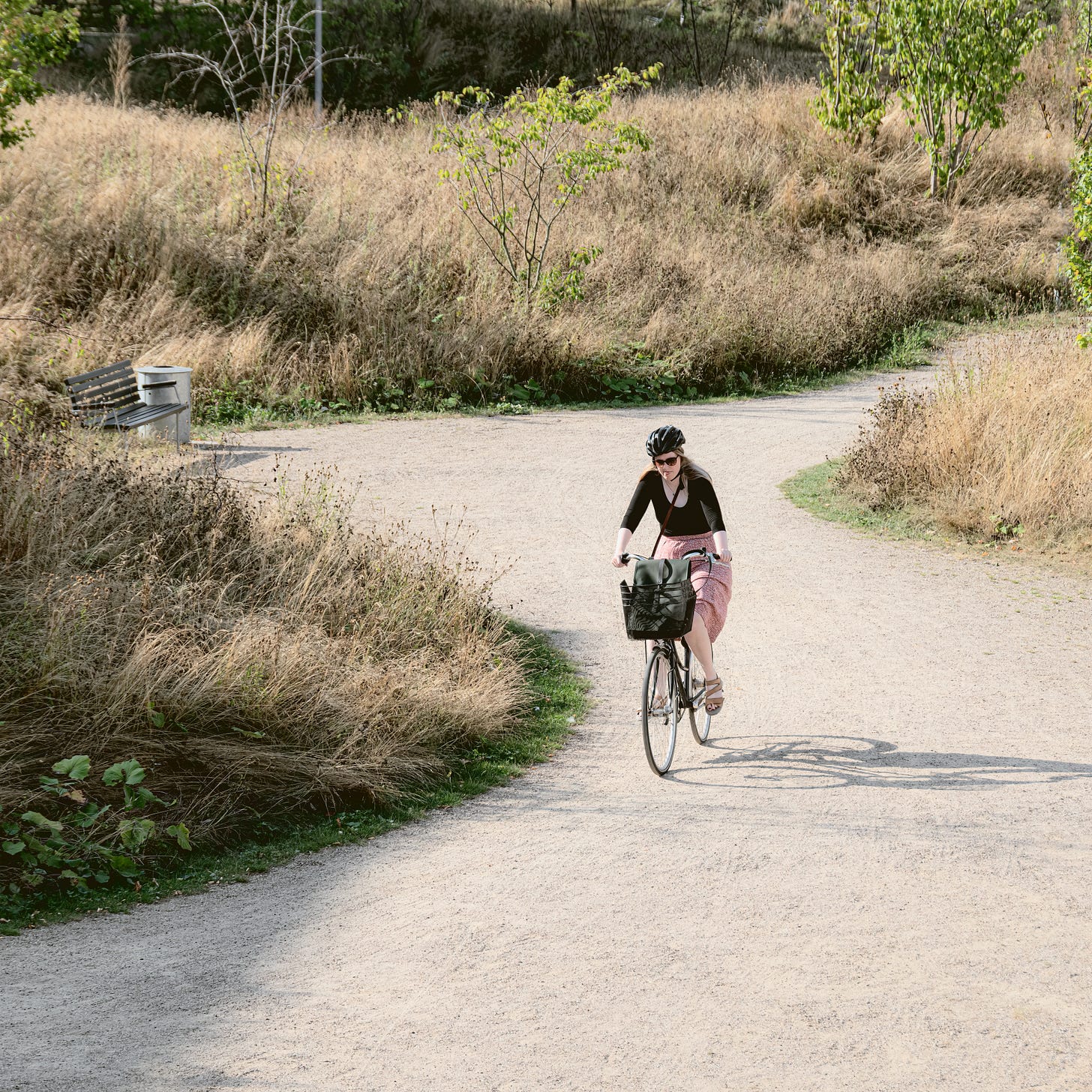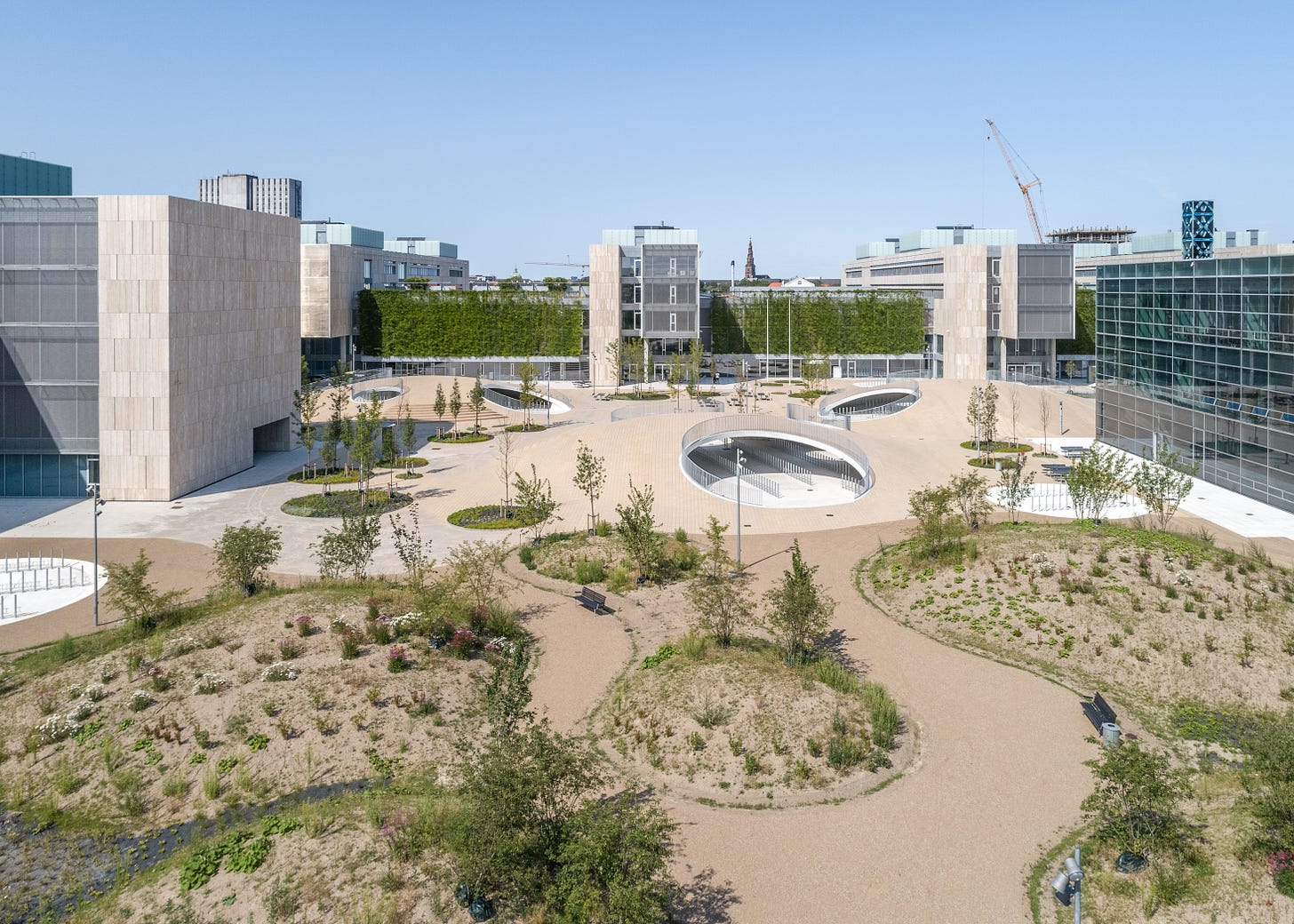In landscape architecture life is, both what we design for, and what we design with.
Our main construction material is the living matter. Plants, soil, water, and the atmosphere are alive and by this constantly changing. To experience the circle of becoming, growing, aging, and dying around you is essential for your very own understanding of life and belonging, it creates tranquillity and gives you space and possibility for contemplation and reflection. But while our construction material is living and dynamic, our way of thinking and forming it, is often static and driven by the wish to create one final unchangeable result. A result recorded in one final green plan and one sellable, sunny picture, showing big old trees, juicy meadows and voluminous flower beds all blossoming at one time. Disappointment is preprogramed here.
I want to put in a plea for how we approach the design with nature and living systems to design extraordinary places and spaces in all stages of their lives, including and even celebrating a changing appearance, even making it their main feature. By this we can not only create beautiful but also robust and adaptable spaces.
Here I want to name Cobes iconic project at Karen Blixens Plads in Copenhagen which opened to the public in 2019. Three sculptural concrete domes are covering more than 1000 bike parking spots, creating an extraordinary urban landscape around the University of Copenhagen. But as famous as these hills became as often overseen are the green hills mediating between the urban square and the nature reserve Amager Common. And it’s here, where we tried to work with growing systems and changing images. Instead of laying out metres of ready-made rolled grass on the hills to shape an instant green image, we decided to use a seed blending of grasses and wildflowers creating a natural meadow. The effect was brown hills at the opening at the park. Not very photogenic.
Seeds need time to sprout and to grow. Some will take hold and spread, some will die, and some will be expelled and displaced by weed from the surroundings. The hills will be looking different every year for some time before a “real meadow” is established. But this meadow then will be containing a diverse number of species and by this attract a lot of insects. It will be robust because it’s established on-site and had time to adapt. And it will need a lower level of maintenance saving money and resources. The brown hills may be seen as a failure becoming a success.
Processes like this needs to be communicated clearly from the start. Instead of one final image we might need to do several images portraying the different stages of growth and age of a park. Diagrams could help to tell a story of change and visualize processes happening. We need to speak honestly with our clients to avoid disappointment and to communicate growth and change as an essential part of our project. And we might use the aesthetic potential of changes and dynamics even more. Materials changing colour and surface over time through the influence of wind and rain. Plantings emphasizing successional (!) and seasonal aspects creating a big variety in age and structure. Terrain modelling shaping multifunctional landscapes for play and leisure but also being able to absorb rainwater or floods. Sometimes dry, sometime muddy.
We need to create places that give space to processes and show that nature comes in many forms, where everything has a place and meaning. Becoming and decay, changing and adapting, chaos and order.








